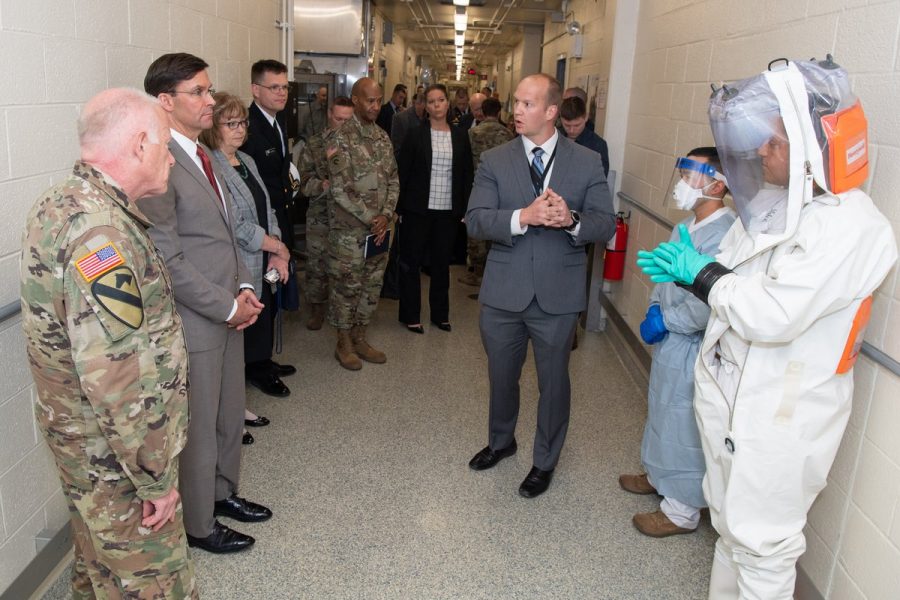The Pentagon on March 17 reached into its strategic reserves to help respond to the new coronavirus outbreak, making available 5 million N95 respirator masks and 2,000 deployable ventilators. In addition, laboratories are available for COVID-19 testing as the Defense Department researches what other steps it can take.
Defense Secretary Mark Esper said 1 million of the N95 masks are available to the Department of Health and Human Services immediately, and the DOD is looking at how to train civilian personnel to use the ventilators. Esper said he has talked to some governors about what the Pentagon can provide as the need for additional medical infrastructure grows, though he cautioned the military’s capabilities are not a panacea for restraining the spread of COVID-19.
Esper told the Navy to “lean forward” and get the hospital ships USNS Mercy and Comfort ready for a possible deployment, and said the military could deploy tent hospitals as well. However, he emphasized that the hospital ships do not have extensive space for treating patients with infectious diseases such as COVID-19, and military tent hospitals are set up for treating trauma patients in an open environment, which also is not conducive to treating an infectious disease.
But deployable tent hospitals and the ships could be used to treat other cases, such as broken bones, falls, or other trauma, opening hospital space to treat COVID-19 patients, Esper said. The locations for these hospitals, if deployed, would be determined on a “case-by-case” basis, working with local officials. It would make the most sense to have them co-located with major hospitals to streamline the process, he said.
“If we can be useful, if we can help, we’re certainly willing to provide that service,” Esper said.
The Pentagon is also open to deploying the Army Corps of Engineers to help build up infrastructure, though they work under strict regulations and contract processes that could be slower than if states and cities moved ahead on their own.
The Defense Department also is looking at calling up Guard and Reserve forces, in that order, to help with the response. Esper noted that this would be a gradual buildup because these personnel would have to be taken out of their civilian jobs and communities and put to work in a different area.
As of early March 17, the governors of 22 states have activated more than 1,560 Guard troops to help combat coronavirus, the National Guard Bureau said in a release. The number of Guard forces supporting state-level efforts more than doubled in a day.
“This COVID-19 pandemic is a historic event and it requires a historic
response from the National Guard,” NGB Chief Air Force Gen. Joseph Lengyel said in the release.
As for military laboratories, they are taking a two-pronged approach to COVID-19 research, including preparing a possible vaccine and studying other therapeutic treatment. Esper said he visited Army researchers on March 16 to see the progress toward a vaccine, which is expected to be ready in 12-18 months.
Digital Platforms Editor Jennifer-Leigh Oprihory contributed to this report.
